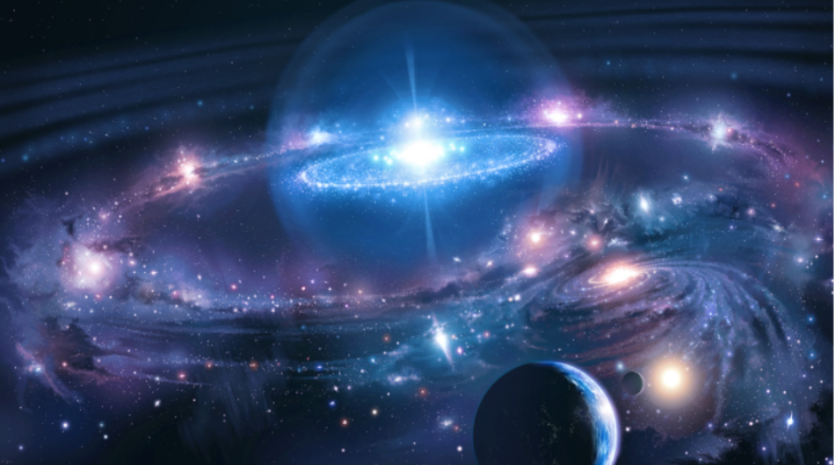The Eight Planets
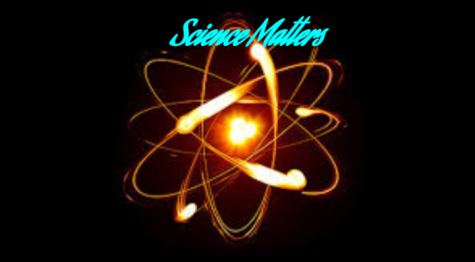
Maybe you know what the eight planets are, in our galaxy, or what order they are in, but did you know that they are made up of a fourth state of matter? Did you know that some planets have more than one moon? Did you know that some planets spin faster than 10,000 miles per hour? What about the fact that the planets have different numbers of plates or layers? As you stand here on Earth, you think, “how is Earth different than other planets? How is things like gravity or climate different than it is here on Earth?” Well, to answer some of these questions, below I will list the eight planets and put facts about each planet, and how they are different from Earth. The planets will be in order by the order that they are in.
8:Neptune
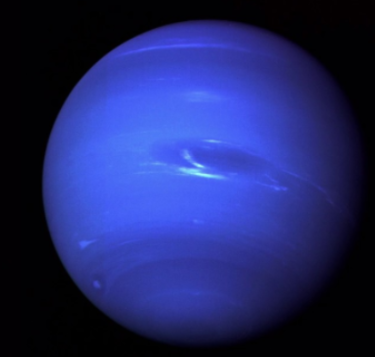
Neptune is the planet with the most wind. Since Neptune is the farthest away from the sun, it is also the coldest planet. The average temperature on Neptune is -353 degrees Fahrenheit! This also means that Neptune is the darkest of all eight planets. Neptune is very similar to Uranus. The atmosphere of Neptune is made out of hydrogen, methane, and helium. According to the text, “It’s made of a thick soup of water, ammonia, and methane over an Earth-sized solid center” (NASA paragraph 1). Even though they are hard to see, Neptune has six rings. Neptune has 13 moons. NASA shows that one of these moons is as big as a dwarf planet. This moon is called Triton. NASA also shows that Neptune has one unconfirmed moon (separate from the 13 confirmed moons that Neptune has). Even though 16 hours is a day on Neptune, it takes Neptune 164 Earth years to orbit the sun. That equals 59,860 Earth days (not counting leap year). Only one spacecraft has ever traveled to Neptune. This spacecraft was the Voyager 2. It looked like this:
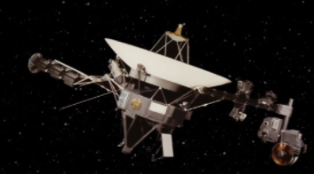
What gives Neptune the blue color is the methane. Neptune is an “Ice Giant.” An ice giant is a giant planet that is composed of mainly heavier elements than hydrogen and helium. Elements heavier than hydrogen and helium include oxygen, nitrogen, carbon, and sulfur. All of these are elements from the Periodic Table Of The Elements. Here are the symbols for these elements;
Oxygen- O Nitrogen- N Carbon- C Sulfur- S
On the periodic table, these elements are all metalloids. You can learn more about these elements on www.ptable.com. Neptune has four layers. Layer one is the core. Layer two is the mantle. The third layer on Neptune is the atmosphere. The last layer of Neptune is the upper atmosphere; or clouds. The speed in which Neptune rotates averages to about 19,720 miles per hour (mph). Neptune has 13 moons and one moon waiting to be confirmed.
7: Uranus

Like Neptune, Uranus is also an Ice Giant. The layers of Uranus are the same as the layers of Neptune; the outer atmosphere, atmosphere, mantle, and the core. However, unlike the other seven planets; Uranus rotates on its side. Also, unlike six of the other planets, Uranus orbits the sun in the same direction as the other planets, but rotates on its axis in the opposite direction. Uranus does have more moons than Neptune though. Uranus has 27 moons! On average, Uranus spins at the speed of 15,290 miles per hour. Just like Neptune, only one spacecraft has ever been to Uranus and that is the Voyager 2. This means that only one spacecraft has ever been sent to the two Ice Giants. Uranus has 13 rings which are also hard to see. The farthest rings away from Uranus are the brightest.
6: Saturn
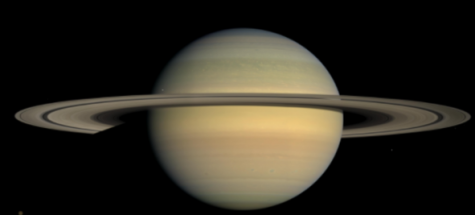
Even though Saturn is not the only planet with rings, Saturn is the planet with the brightest rings. The rings that we see around Saturn are made out of groups of small ringlets that surround the planet (Saturn). Saturn has 53 moons just like Jupiter. Saturn has nine moons that are unconfirmed. These moons could be confirmed when we can see them more clearly. It makes sense right; biggest planets, get the most moons. Saturn has a moon named Titan, and this moon has an atmosphere on it which is very unusual for a moon. Saturn is the second biggest planet in the Solar System. Saturn is a ‘Gas Giant.’ Saturn is mostly made out of hydrogen, (H), and helium, (He). Saturn cannot support life because it does not have a surface so it would be hard to stand on, It is made out of 75% hydrogen and 25% helium. This means that there would be very little to no oxygen on Saturn which means you could just barely be able to breathe or you couldn’t breathe at all. Like Neptune and Uranus, Saturn is also a very windy place. It is very unlikely that anybody will ever be living on Saturn. Saturn has only had four different spacecraft visit it so far. These spacecraft include Pioneer 11, Cassini, and Voyager 1 and 2. Saturn is considered the “Jewel of the Solar System.” According to the text, “Saturn is the farthest planet from Earth discovered by the unaided human eye” (NASA paragraph 3).
5: Jupiter

Jupiter is the biggest planet in the Solar System. Like Saturn, Jupiter has 53 moons. Jupiter also has 16 moons that are waiting to be confirmed. Jupiter has the biggest moon in the Solar System. The name of this moon is Ganymede. You can see this moon with just a pair of binoculars! Just like Saturn, is also made out of hydrogen (H) and helium (He). Jupiter is similar to a star but it has never gotten big enough to start burning. Jupiter also has rings, but they are too faint to see. Jupiter has giant storms like the “Great Red Spot.” According to the text, “With tumultuous winds peaking at about 400 mph, the Great Red Spot has been swirling wildly over Jupiter’s skies for the past 150 years—maybe even much longer than that” (NASA paragraph 2). The Red Spot is a storm in Jupiter that has been going on for hundreds of years. “Gigantic” on Jupiter means as wide as Earth. This is the Red Spot;

As you can see, this is as big as Earth!! So, imagine if we tried to live there. But, since Jupiter is a Gas Giant, that means it is made out of hydrogen and helium. Jupiter also does not have a solid surface but it does have a solid core about the size of Earth. Jupiter has three layers; the first layer is hydrogen gas, the second layer is liquid metallic hydrogen, and the last layer, the core which is made out of metals and hydrogen compounds. Jupiter is twice as big as all of the other planets in the Solar System combined!!! There have been eight different spacecraft that have either visited or passed by Jupiter, these spacecraft include the Pioneer 10 and 11, Voyager 1 and 2, Cassini, New Horizons, Juno, and Galileo. The Galileo mission was the only mission that was planned to orbit around Jupiter and study the planet. The spacecraft of the Galileo mission is named Galileo. One day in Jupiter is 10 hours. It takes Jupiter 11.86 Earth years to orbit the sun. That is equal to 4,330.6 Earth days.
4: Mars
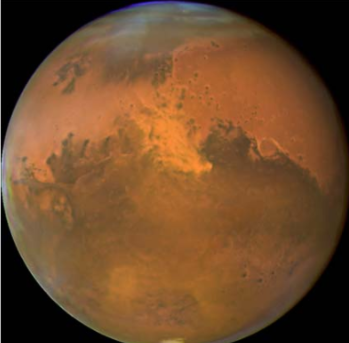
Mars is half the size of Earth. Mars is often known as the Red Planet. Mars is red because it has rusty iron in the ground. Just like Earth, Mars also has seasons, polar ice caps, volcanoes, canyons, and weather. Even though it is thin, Mars has an atmosphere made of carbon dioxide, nitrogen (N), and argon (Ar). On Mars, there have been signs of ancient floods but now water mostly exists in thin clouds, and icy dirt. According to NASA, “ On some Martian hillsides, there is evidence of liquid salty water in the ground” (paragraph 2). Scientists would like to figure out if Mars has ever had living things in the past. They also are curious to learn if Mars could support life in the future, or even now. There have been 20 total spacecraft that have been sent to Mars. Mars is also the only planet that we have sent rovers to. Rovers drive around taking pictures and measurements of Mars. Like Earth, Mars is a terrestrial planet. Terrestrial means small and rocky. Mars only has two moons which are named Phobos and Deimos. Mars has an active atmosphere but its surface is dead. All of Mars’s volcanoes are dead. Mars is a cold desert world. The length of a year on Mars is 687 Earth years; that is almost twice the days as Earth. This means that it takes Mars 1.88 Earth years to orbit the sun.
3: Earth
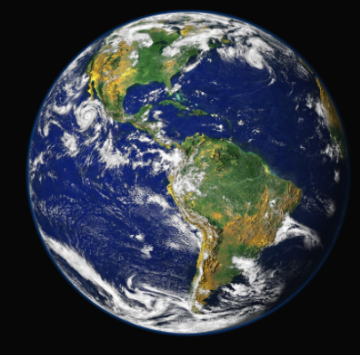
Did you know that a year is actually 365.25 days? If a year was only 365 days, we would not have leap years. It makes sense though right; 0.25 x 4 = 1. Therefore every 4 years we have a leap year because it is one extra day. Earth’s atmosphere is just the right thickness it needs so that it is not too warm or cold. Just like Mars, Earth is a terrestrial (rocky) planet. Earth has an active surface with volcanoes, canyons, valleys, plains, and so much more. Earth is an ocean planet. About 70% of Earth is water. Most of our atmosphere is made out of nitrogen. The atmosphere has just the right amount of oxygen so that we can live. The atmosphere around us protects us from incoming meteoroids. Most incoming meteoroids break up in our atmosphere before they can strike as meteorites. There is not a lot to say about Earth because since you live here you know a lot about it. Even though we live on this planet, we are still learning about it. We have satellites in space that are still learning about our home planet. The layers of Earth are the crust, the mantle, the outer core, and the inner core. As you know, Earth only has one moon. Earth is the only planet to have a moon.
2: Venus

For Venus, one year is 243 Earth days. Venus is about 67 million miles away from the sun. Venus spins slowly, and it spins in the opposite direction as most other planets. Venus does not have any moons or any rings. Many scientists have come to believe that water was once on the surface of Venus. Future explorers will look for signs or evidence of an ancient ocean on Venus. The surface on Venus is about 9000 F; that is hot enough to melt lead!! Because of these extreme conditions, it is very unlikely that Venus can support life. Venus has had many spacecraft that have been sent to it. More than 40 spacecraft have explored Venus. The surface of Venus slowly rotates while winds as strong as hurricanes blow across the planet sending clouds completely over the planet. Venus is a terrestrial planet. According to the text, “Venus’ solid surface is a volcanic landscape covered with extensive plains featuring high volcanic mountains and vast ridged plateaus” (NASA, 10 things to know about Venus). Even though Venus may not be the closest planet to the sun, Venus is the hottest planet. The reason behind this is that Venus has an atmosphere made up of carbon dioxide and it has clouds made out of sulfuric acid. According to Universe Today, “carbon dioxide makes an excellent greenhouse gas, trapping heat from the Sun. The atmosphere of Venus allows the light from the Sun to pass through the clouds and down to the surface of the planet, which warms the rocks” (www.universetoday.com, Why is Venus so hot?). A “greenhouse gas” is any of the gases whose absorption of solar radiation is responsible for the greenhouse effect, including carbon dioxide, methane, ozone, and the fluorocarbons (dictionary.com). This is the reason in which why Venus is so hot.
1: Mercury
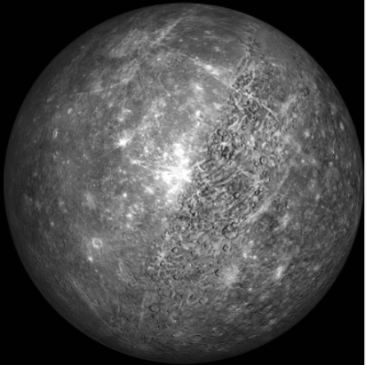
Mercury is the smallest planet in the solar system. Mercury is just a little bit bigger than Earth’s moon. Mercury is the closest planet to the sun even though it is not the hottest (see Venus above). A year on Mercury is actually only 88 Earth days. The closer you get to the sun, the less distance that each planet has to orbit, therefore that is why the closer you get to the sun the smaller the year is for each planet. Mercury spins a lot slower than Earth. Mercury spins an average of 10.892 km/hr. The length of a day on Mercury is 59 Earth days. Mercury is also a terrestrial planet (a rocky planet). Mercury is 58 million miles away from the sun. How would the sun look like from Mercury? The diameter of the sun would be more than 3 times the size as we see it on Earth. The size/distance of the sun from another planet affects the way things are seen from that planet. For example;

Mercury has a thin atmosphere composed of oxygen (O) , sodium (Na), hydrogen (H), helium, (He) and potassium (K) (see periodic table, www.ptable.com). According to the text, “Atoms that are blasted off the surface by the solar wind and micrometeoroid impacts create Mercury’s exosphere” (NASA, 10 Things To Know About Mercury). Just like Venus, Mercury is without moons and without rings. Only two spacecraft have visited Mercury; these spacecraft are the Mariner 10, and the Messenger. Because a day on Mercury is so long, Mercury only has one sunrise for every 180 Earth days. If a year on Mercury is 88 days, that means that a sunrise only happens on Mercury every 2 years and 4 days (on Mercury).
What is the circumference of each planet?

To see current stats about each planet and to see how far away they are from the sun just see the following links:
Between planets, there are a lot of similarities. Some planets are more similar to Earth than you might think. So far, we do not think that any planet can support life. It would be cool though if we could live on and explore a different planet. The universe still holds lots of secrets that are waiting to be explored. Theories and hypothesis’ might change but this means that we are learning more about the universe and that we are advancing in technologies and that we can know even more about our universe. NASA will always be learning more about the universe and possibly about other galaxies too. Just visit www.nasa.gov to learn updates about things they have researched. From the first time we sent a person to the moon to the first time that we discovered other planets, we have always been learning more and we always will be able to learn more and answer more questions about outer space. I hope this article answered some of those questions you had or anything that you wanted to find out about the universe.
